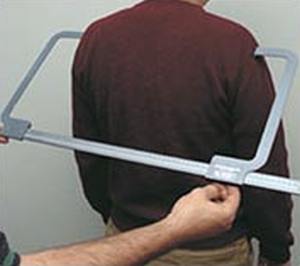

MedFriendly®


Anthropometry
Anthropometry is the study of human body
measurements, such as weight, height, and size,
including folds of skin. The purpose of anthropometry is
to study and compare the human body measurements
under normal and abnormal conditions. Anthropometry is
a part of anthropology, which is the science of the origin
and development of the human body. In medical care,
anthropometry is used in tracking height, weight, head
size, and body length of babies and young children to
make sure they are developing properly. This
information is plotted on a growth chart.
An anthropometer
FEATURED BOOK: The Measure of Man and Woman
This information is plotted on a growth chart. Consistent deviations from the growth chart
can be cause for medical concern, such as failure to thrive. Failure to thrive is a term
used for infants that describes abnormally slowed growth and development resulting from
conditions that interfere with normal appetite, activity, and metabolism. Anthropometry is
also used in adulthood to measure weight to detect if someone is abnormally
underweight or overweight (i.e., obese).
Another measure used in anthropometry is the cephalic index, which measures the size
of the head/skull. The head sizes can be classified in different ways: brachycephaly (a
short broad head), dolichocephaly (abnormally long head), mesocephaly (medium sized
head), microcephaly (abnormally small head), and macrocephaly (abnormally large head).
"Where Medical Information is Easy to Understand"™
Anthropometry involves the use of anthropometers, which are
devices that are used to measure various dimensions (such as
height and size) of the human body. This differs from
anthroposcopy which is judging body build and body type by
visual inspection as opposed to using measurement devices.
Anthropometric means pertaining to anthropometry.
Anthropometry comes from the Greek word "anthropo" meaning
"human," and the Greek word "metron" meaning "measure." Put
the words together and you have "human measure."















